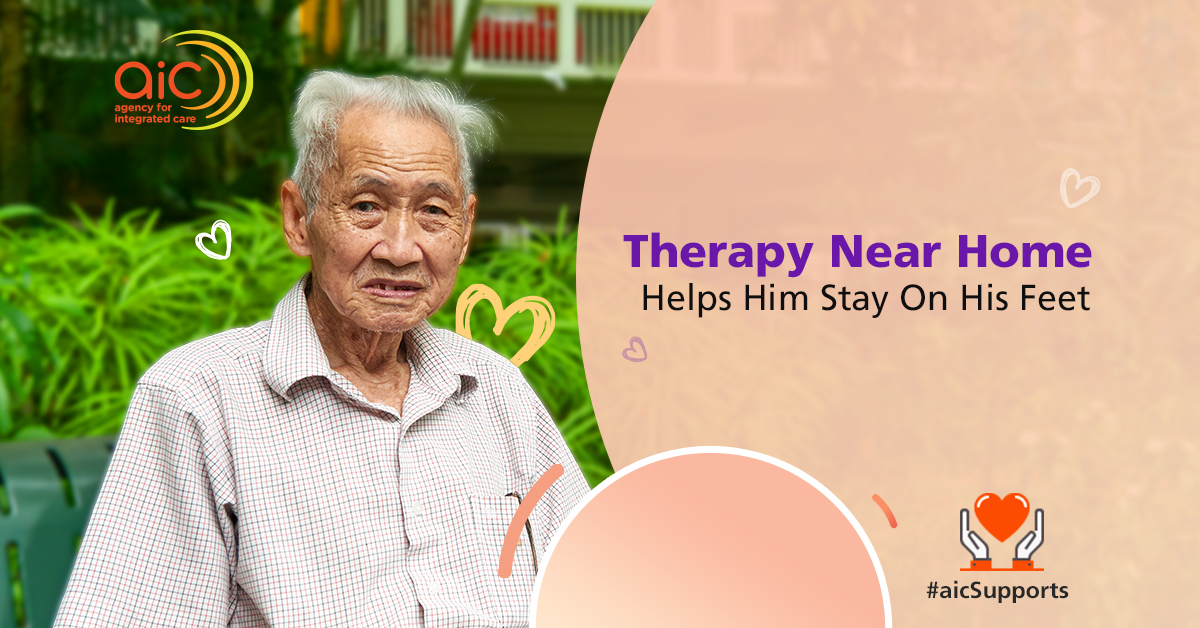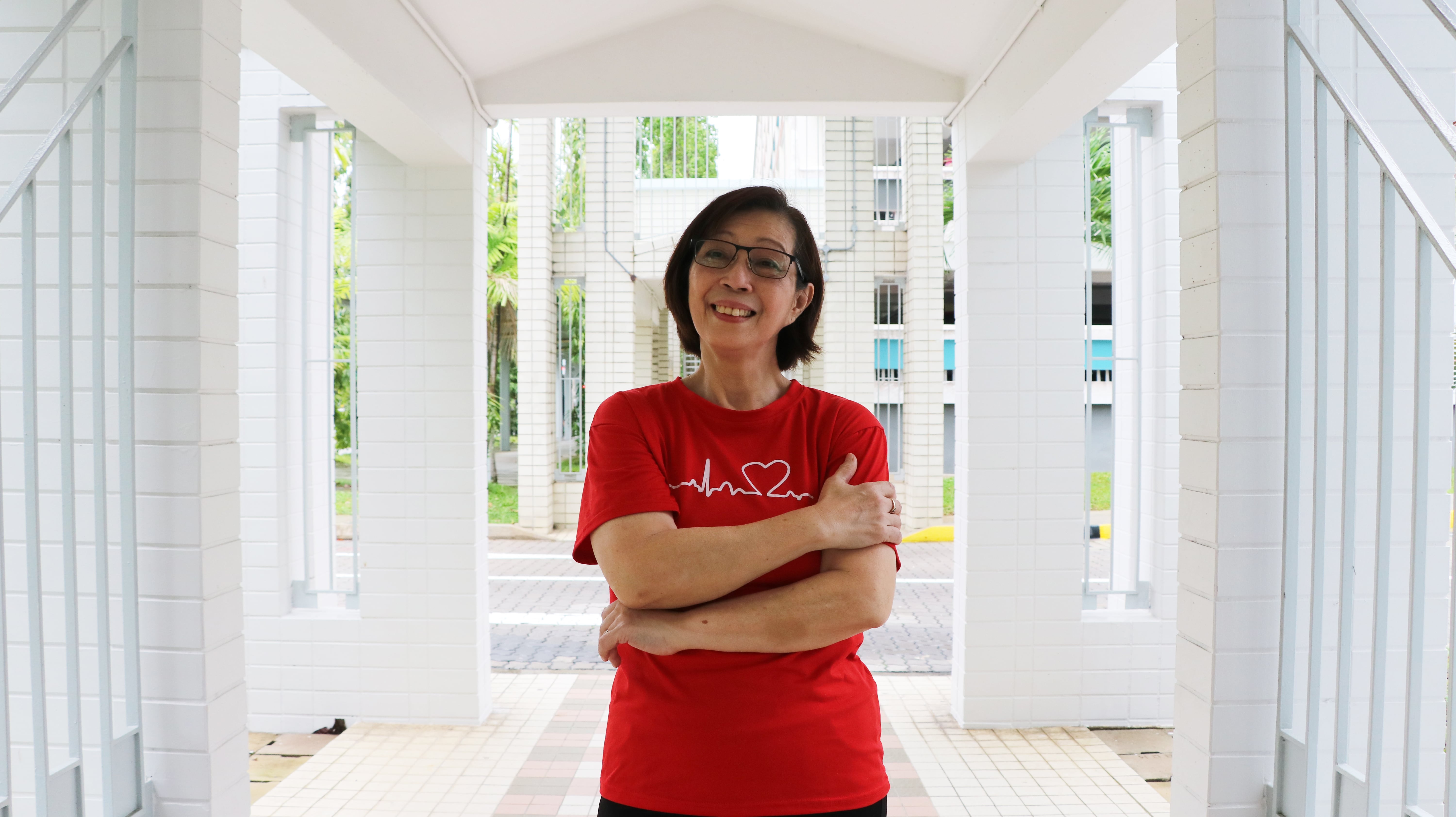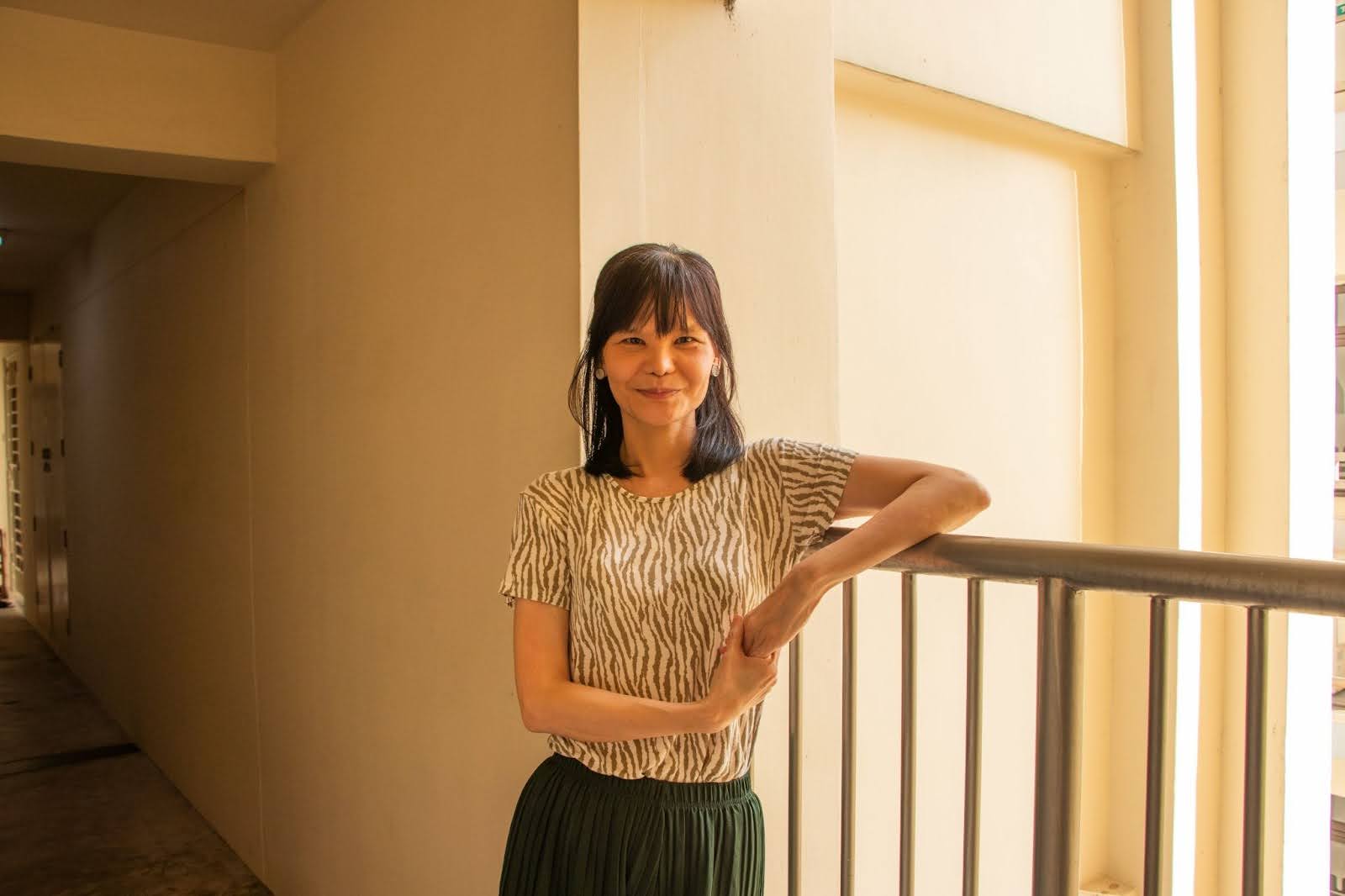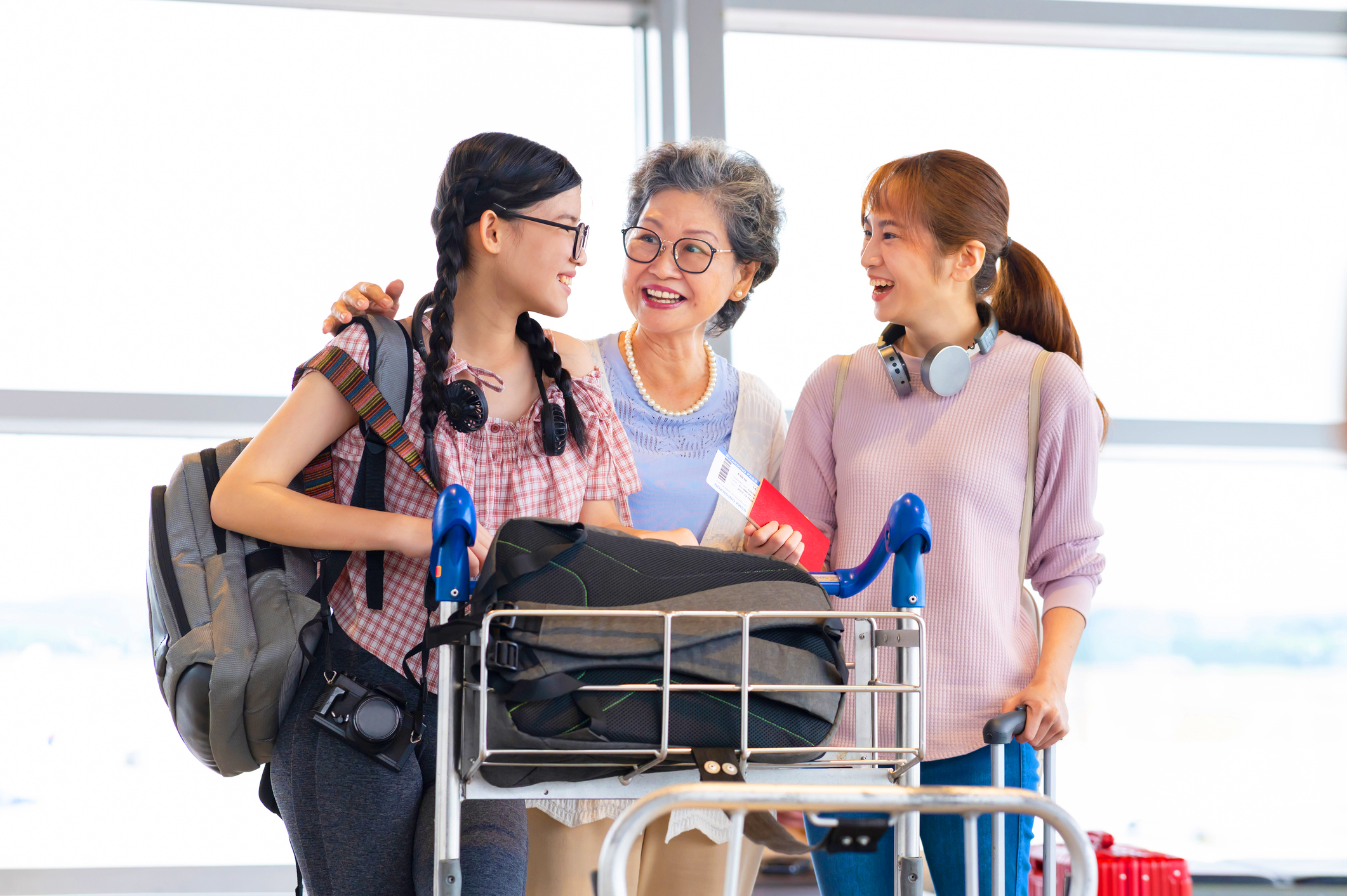Once a newspaperman, always a newspaperman.
It has been more than 30 years since Mr Liew retired, but the 84-year-young former translator for Nanyang Siang Pau (Nanyang Business Daily) still finds himself picking up newspapers or books to read every now and then. He has so many reading materials to get through that he puts them in a small roller luggage, which he calls his “mobile library”.
Almost every morning, he would make his way to the community club or the library near his home for a reading session.
Despite these activities, age has been catching up with Mr Liew. “About two years ago, I realised I was walking slower and losing my balance easily, which led to me falling at home. I injured my left leg. But thankfully, not my head.”
Early this year, his falls prompted his daughter, who is also his caregiver, to raise the concern to doctors at SATA CommHealth Community Hub.
Joining ASPIRE Programme
After an assessment of his frailty level, the doctors recommended Mr Liew for the ASPIRE Programme.
ASPIRE is a community-based clinical frailty intervention programme for pre-frail and frail seniors. It is a collaboration between Sengkang General Hospital (SKH), SATA CommHealth, and St Luke’s Eldercare, with more community partners to come onboard progressively.
Once enrolled in ASPIRE, the seniors are connected to doctors, nurses, and allied health professionals, who will work with the seniors to improve their frailty status. Treatment or rehabilitation sessions are conducted in Community Care facilities, such as Community Rehabilitation Centres.
Referrals into ASPIRE can be from AIC’s Community Network for Seniors, Senior Activity Centres, primary care and community partners in the Northeast region of Singapore, as well as SKH’s community frailty screening programme, the Individual Physical Proficiency Test for Seniors (IPPT-S).
In cases such as Mr Liew’s, seniors are referred to the programme by doctors at SATA CommHealth, who would advise seniors on the recommended therapy (e.g., Physiotherapy, Occupational Therapy, Dietetics), which may last up to a year.
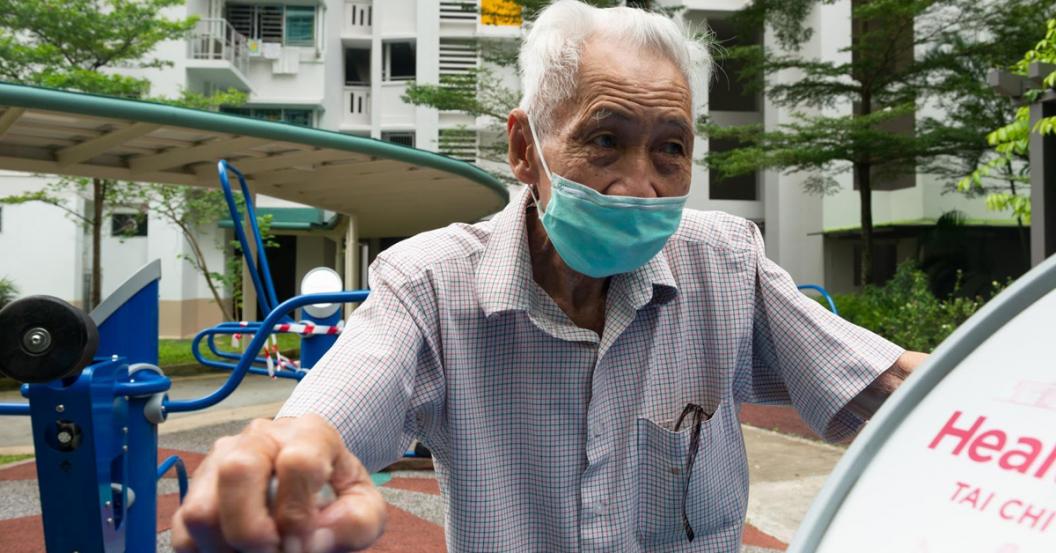
Mr Liew was recommended 18 weekly physiotherapy sessions at the SATA CommHealth Community Hub that he frequents. The hub is just 10 minutes’ walk away from his home.
Beyond the in-centre exercises at SATA CommHealth, Mr Liew also had ‘homework’ in the form of exercises to complete at home. It didn’t take long for his condition to show signs of improvement, but his progress had to be halted in April 2020 when the Circuit Breaker measures started.
Playing Catch-up After Circuit Breaker
Although Mr Liew could not visit the centre in person, the team at SATA CommHealth made sure to follow up with him every week over the phone.
They used the calls to check in on him and remind him to complete the home exercises regularly, so that he would stay on track, even during the pandemic.
When Phase 2 of Circuit Breaker began, Mr Liew resumed his weekly physiotherapy sessions. With the combined efforts of the programme’s physiotherapist, doctors and care coordinator, Mr Liew’s walking posture slowly improved and he showed more strength in his legs.
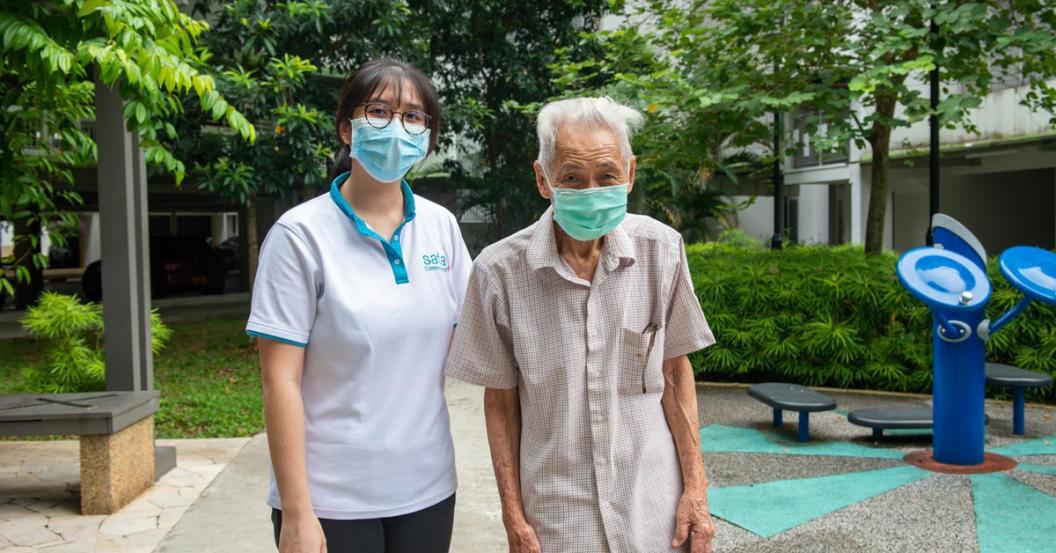
Hanna Devina, the Care Coordinator who works closely with Mr Liew, saw the improvements in him and says, “He used to shuffle when he walks and now he can walk with normal steps. We also advised him to remove any tripping hazards, such as the luggage he used to bring around. He’s a lot more conscious of his surroundings and you can tell that the way he walks is more stable now.”
Maintaining Independence
Although Mr Liew has yet to complete his 18 physiotherapy sessions, he feels better already: “After a few sessions, I feel that my leg isn’t as weak as it used to be and I can walk without much difficulty.”
In the meantime, while he improves his mobility, Mr Liew will make his own way, every morning or so, to the nearby Community Hub – not just for therapy but also for leisure.
There, he will meet his new friends from the therapy sessions and chat about the news or play a board game. Most importantly, he will do so on his own terms and fully enjoy his golden years.


